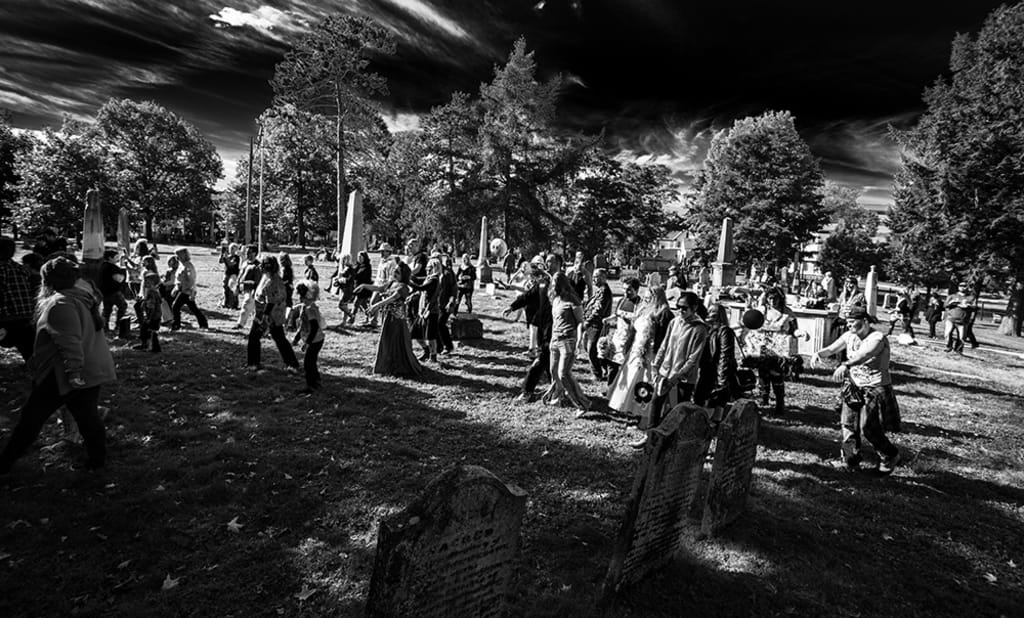How Does Violence Fit into Your Stories?
And What Is the Most Important Thing It Does?

Violence. It’s everywhere. Think about it: An ant foraging through the grass on a sunny summer day thinking, “It’s so good to be alive. And to be an ant.” Immediately after which you step on it and crush its little body into ant mush.
Now, you may not think this is violent, but tell that to the ant.
And then, of course, there’s the rest of the world: Wars, torture, genocide, murders, beatings, forced labor, rape…and I’ll bet you can take most of these labels and immediately attach a place, person or incident. Not a day goes by that someone isn’t shot, stabbed, blown up, beaten to death, stoned, poisoned, strangled, drowned, buried alive, thrown from a high place, burned to death or beheaded. Some of these things might even happen just down the street from where you live.
It’s everywhere and it takes countless forms. It could be physical violence or emotional. Some people claim that emotional violence is worse than physical violence because it lingers and demeans and robs its victims of self-meaning.
So where does violence fit in your writing? Well, if you’re writing about a street gang, you’re going to need a few street fights, one or two drive-by shootings, and some violent language…just to touch on the surface. As a teen, I was in street gangs in Toronto and Winnipeg. Violence was integrated into every moment of the day and night. It was a sub-thought attached to every thought. It was a way of life.
If you’re writing about a street gang but not getting into their characters (say, your main character sees them in the street every day when she comes home from work), then you don’t have to get into a lot of detail. Just seeing them hanging around looking volatile will generally do the trick. You don’t have to show them stabbing people every time the main character comes home. You don’t have to show them stabbing anyone at all. Unfortunately, some writers (notably novice writers) will spend a paragraph or two describing a knife or fist fight at this point…every time the woman sees the gang. Even the toughest gangs need to take a break to stop bleeding.
Too much violence is gratuitous (Yay! I got to use the word gratuitous today). It’s not needed and it detracts from whatever you’re writing about. You should be more focused on the main character and less on the street gang.
However, if your main character is in the street gang, you’re going to need lots of violence for the story to be convincing. And when I say lots of it, I don’t mean fights and stabbings on every page. I mean that it should always be under the surface, either in the character’s mind and manner or in the imagery. Don’t describe windows as bright and shiny; describe them with shards of light like daggers. If the main character has a family, it may cross his mind that he’s putting them in danger with his lifestyle, or maybe they pose a weakness for him. These are things he thinks about, the sub-thoughts.
When the actual violence happens, don’t write something like, “Chopper and Diaz circled each other looking for openings. Chopper struck first and Diaz went down, mortally wounded.” End of fight. When the violence happens, get into it. Get the reader into it. Get into the minds of the characters. What are Chopper and Diaz thinking as they circle each other? Put in a few fakes and counters. Describe the desperation in their eyes, the shake in their hands, the quivering in their lips. Show the blood gurgling, oozing, pouring, spurting…or whatever, from Diaz’ wound. Show the look of horror on his face when he realizes that he’s just bought a one way ticket to the void.
Make the violence, both its degree and detail, fit the setting and the characters.
“Did you say characters?” you ask.
Yep, characters. People. Personalities. They’re all different and none of them are simple. If your characters are simple, one-dimensional cardboard figurines, then you need to pay more attention to putting some blood and guts into your characters.
In this respect, when it comes to violence, it’s not enough to have the violent husband slap his wife around or the much-hated office bully to drive another IT worker to suicide. It’s not enough to have a weary-eyed mother slap her screaming four-year old in the mall and then hug him. It’s not enough to have a pimple-faced kid walk into his school with an AK 47 and start shooting. It’s not enough to have a disappointed father berate his little league son all the way home from a game after striking out when he was the team’s only hope.
It’s not enough to show just the violence. You have to show where it comes from. Psychopaths and sociopaths aside, people are never violent for no reason and, often, the reason behind the violence is nowhere to be seen.
That’s where the writer comes in. You are the one who will make the violence make sense. In Eugene T. Genlin’s book Focussing, he says something to the effect of all the bad little things that happen in our lives stick around in our bodies and psyches until they’re resolved. The longer it takes to resolve them (if ever), the harder they cry out to be resolved until they eventually boil up and explode as when the mother slaps her child and immediately regrets it. It might be something completely out of character for her, and she has no idea why she slapped her child. Under the surface, though, she might have been told repeatedly by her father that she was a bad girl. She might have been the black sheep of the siblings and always received hand-me-downs instead of new clothes. She might have been kept after school once for something she didn’t do but, rather than complain, she just accepted her fate and served the time.
She might have accepted all of this as her lot and just pushed it deep into the back of her head where it would be forgotten, ignored. But that child who was told that she was a bad girl is still in there, lurking around, crying out for justice or demanding that someone buy her new clothes. She wants someone to explain that she didn’t pass the note and didn’t deserve the detention. And now she’s mad and strikes out and the mother slaps her child, realizes what she’s done, feels terrible, but has no idea why she did it.
Don’t leave the violence hanging there. Show where it comes from. This will give your characters depth, blood, a beating heart.
How about the kid who sets cats’ tails on fire (remember psychos and socios aside)? What’s his problem? Yes…that’s what you as a writer have to ask: What’s his problem? Why did he do that? Has he watched an uncle on a farm wring the necks of a dozen chickens and came to think that it’s OK to be cruel to animals? Did he get a beating the day before and now he’s taking it out on the cat? If this kid is going to be anywhere near an important character in your story, you have to show the origin of his violence. We are everything we’ve ever been, and who we are in the present is how well we handle, or don’t handle, this.
In my first novel, Heavy Load (a laundromance), I created a character I didn’t like. His name was Baxter and he was one of those nose-up-his-own-butt-overly-competitive jock types that I would like to put on a ship heading for the Bermuda Triangle (not that I have anything against jocks…just this type). I planned on making his life hell. Which was, admittedly, an immature attitude, but here was my chance to demean, break, hurt, castigate someone I didn’t like. Well, I started out doing this. I made him impotent. But then I started getting more into his character and asked why he was so unlikeable. The answer to this came when I wrote a dream sequence for him. It went something like this:
I walk to my room and get into my bed and lie with my eyes wide open and my room is dark except for a dim night light in the socket by the door close to the floor and this is the only light in the room because the night is dark and starless and my drapes are thick and dark on the small window of my room and the light from the floor grows brighter as my eyes adjust to the dark and I see the faint outlines of a dresser and toys and a mirror and the light from the floor reflects off the mirror and the light becomes brighter as a sliver of light comes into the room as the door opens further and my eyes are wider and I push myself deeper into the bed and further under the sheets to hide myself from the light coming from the door but the light keeps growing as the door opens more and it opens slowly and light begins to pour in from the door until it drowns out the light from the night light and shines stronger and brighter on me until it almost seems to burn through the blankets and I bury myself deeper into the bed and the blankets but the light keeps getting brighter and brighter and unbearably hot and stifling and I'm afraid of the light and the light smells sweetly fetid and the light burns away my blankets and burns into my pajamas and I push myself deeper into my bed unable to turn away and unable to run or speak or yell and a soft sound comes from the light comforting and reassuring but bathed in the scorching light that penetrates the blankets and my pajamas and I feel uncomfortable and afraid but the sound is reassuring and I try to relax as the sound encourages me to relax and the light seems to caress my naked body and my sweating forehead and I just want to fall asleep and fall asleep and forget the light and the sound and just fall asleep.
I realized I was writing about a kid who was sexually abused by his mother and took it from there. This was something he’d buried in a cloud of protective forgetfulness, but that cloud was beginning to dissipate around the time of the story. In one scene he beats the crap out of his best friend while screaming: “F--k you, mom.”
Baxter became the most convincing character in the novel.
Go figure.
Make violence reveal character, not obscure it.
About the Creator
Biff Mitchell
I'm a writer/photographer/illustrator wondering why I'm living in Atlantic Canada.






Comments
There are no comments for this story
Be the first to respond and start the conversation.